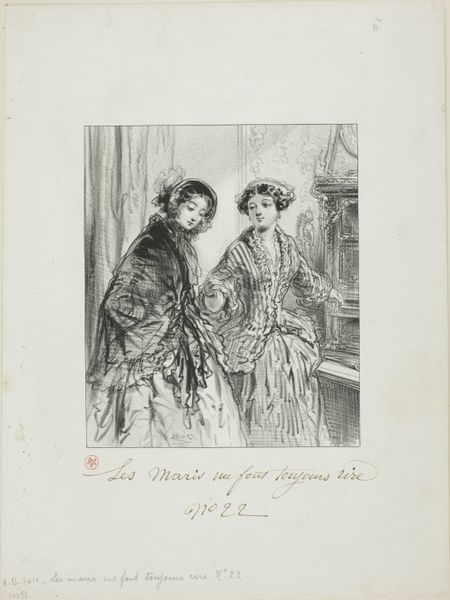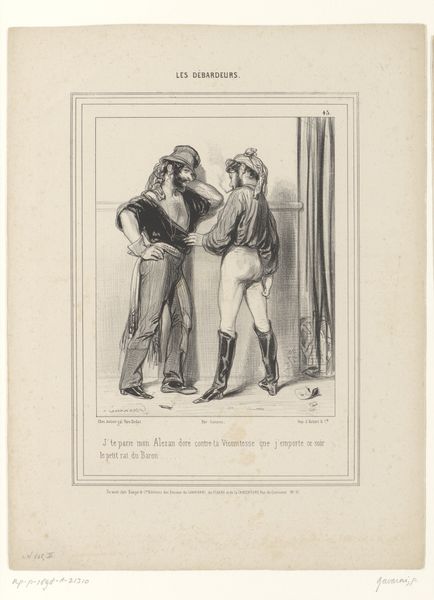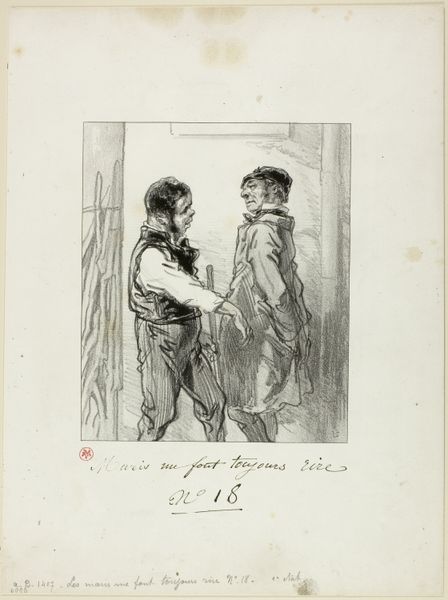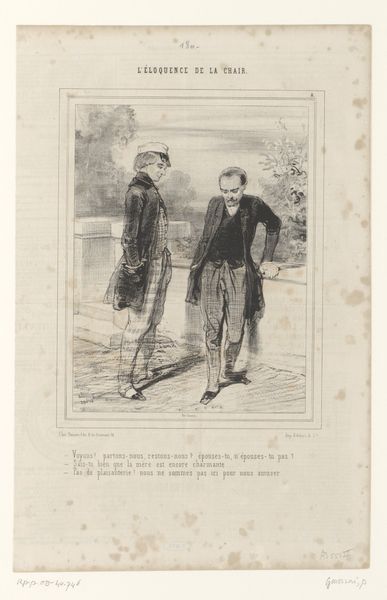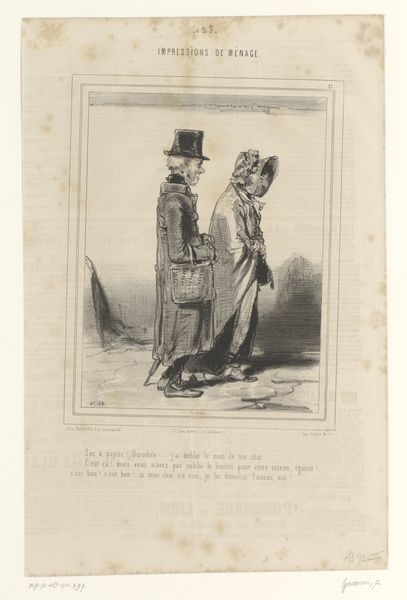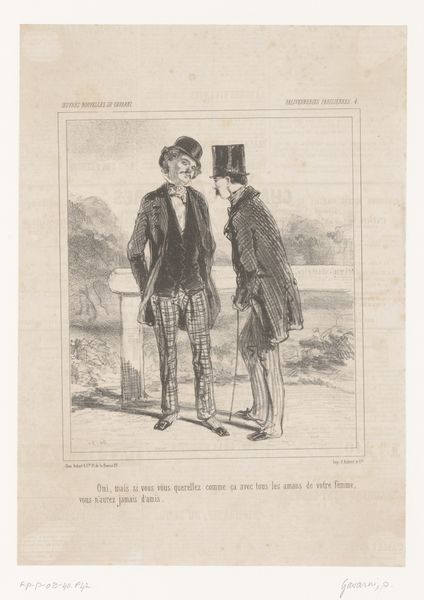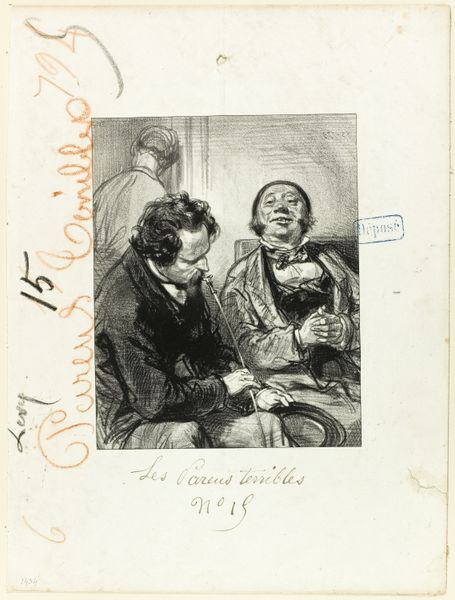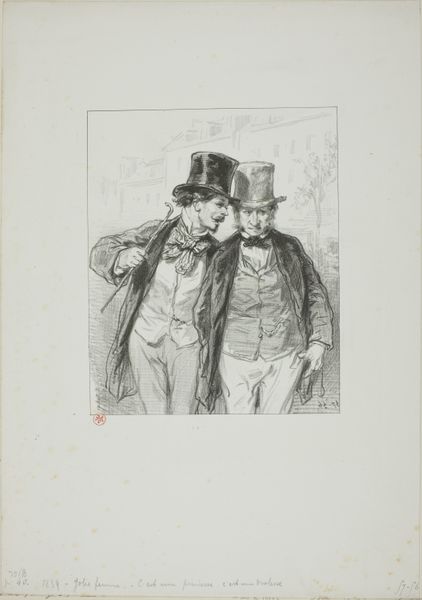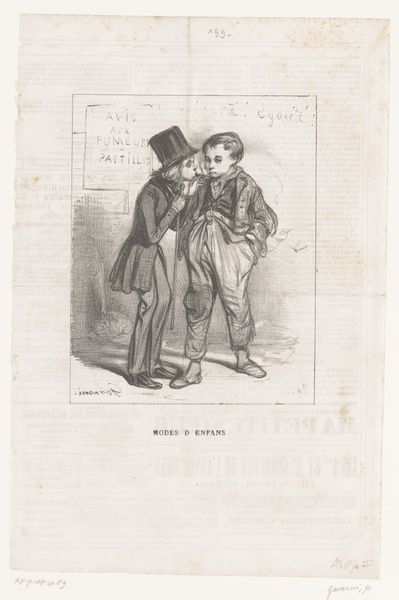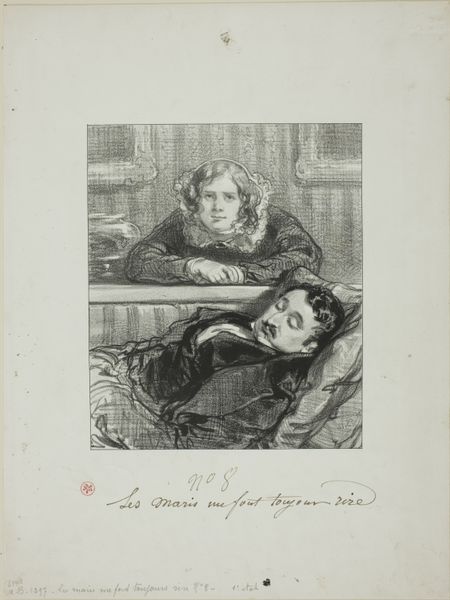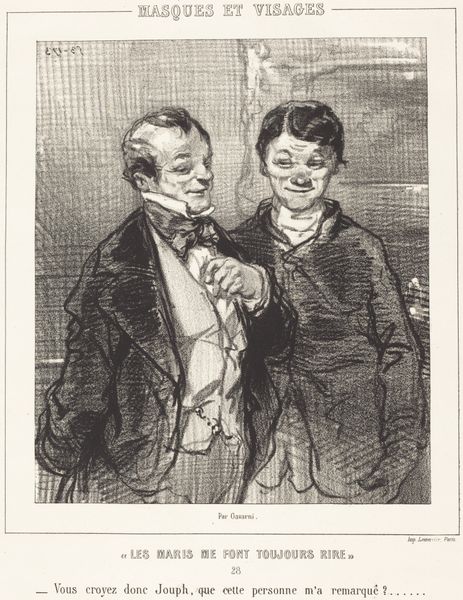
Dimensions: 190 × 159 mm (image); 353 × 263 mm (sheet)
Copyright: Public Domain
Editor: Here we have Paul Gavarni’s lithograph, “Husbands Always Make Me Laugh: Really my son-in-law,” created around 1853. It depicts two men in a rather candid scene, sketched with remarkable detail considering it’s a print. There’s something subtly humorous about their expressions, a sort of knowing glance between them. What compositional elements stand out to you most in this print? Curator: Note the clear delineation of form achieved through the stark contrast of light and shadow, especially in the rendering of the clothing. The artist utilizes line quality masterfully, employing a dense network of hatching and cross-hatching to create volume and texture. Notice, too, how the figures are placed in the foreground, almost flattened against the picture plane, a deliberate compositional choice emphasizing the psychological tension between them, yes? Editor: That makes sense. The detail in their clothing is remarkable, particularly the patterned coat of the figure in the background and the striped trousers of the figure in front. What about the way the composition guides our eyes? Curator: The gazes of the figures create a dynamic relationship. The one on the left, caught mid-sentence perhaps, draws our eye toward his companion whose averted glance creates a sense of contained reserve. This controlled asymmetry invites deeper inspection. Editor: So, the subtle cues of body language and composition are more significant than any narrative? Curator: Precisely. Meaning resides not in anecdotal detail, but within the formal arrangement itself. The relationships between line, form and value generate a network of aesthetic signification. The print is less a story than an articulation of the structures of seeing. Editor: I see. Focusing on those elements really clarifies how the artist's choices influence how we interpret the image, almost regardless of its historical context. Curator: Indeed. And this close examination highlights the autonomy of the art object itself, setting us on the right path.
Comments
No comments
Be the first to comment and join the conversation on the ultimate creative platform.
